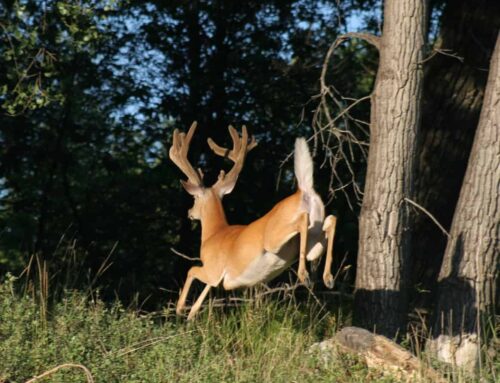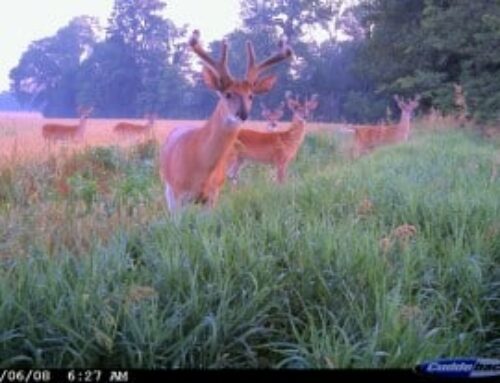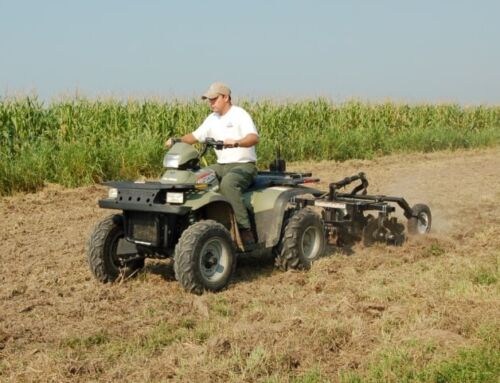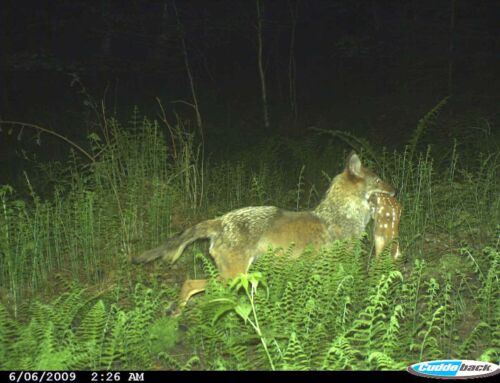
For his graduate research project at Auburn, deer researcher Clint McCoy tracked the movements of 37 GPS-collared bucks on a 6,400-acre hunting site with excellent habitat in South Carolina. Read the full story at QDMA.com; here are a few highlights with my observations:
Clint found average fall home range size for a buck was 350 acres. A buck’s age did not seem to play a role in how far he moved. “Our two smallest home ranges were yearling bucks at 60 and 90 acres. Our two largest home ranges of 754 and 640 acres were also yearling bucks.”
This seems to contradict some earlier studies which found that older bucks have the smallest home ranges of all bucks. But this finding in Clint’s study might be an anomaly. To me, it’s quite possible that the yearling bucks he tracked for 600-700 acres were going through the “drifter stage,” when juvenile bucks travel far and wide in search of a comfortable place they will call home for the rest of their lives. Several earlier deer studies have suggested young deer do that.
Clint found that more than age, a buck’s individual personality drives his movements. Some bucks tend to cover large acreage while others are content to stay closer to a home base. Clint points to two 4½-year-old bucks in his study: one had a home range of 521 acres, and the other only 108 acres.
This is a finding that confirms something I have been writing about for years—and something that many hunters fail to understand. Like people, all big bucks have different personalities. Some are bold and aggressive, and these are the ones that travel the farthest and show up the most times on trail cams. Other deer are more passive and secretive; they probably travel the least and are seen infrequently.
The more you understand the personality of the buck you are hunting, the more you can get in his head and try to predict how much and when he’ll move…and the better chance you’ll get him.
To me, the determining factor here is the high-quality habitat of the South Carolina study area, which is actively managed for wildlife and timber production. Some 300 acres of food plots are planted on the property each year. On an area like this, bucks don’t need to move far to find food, cover and does in the rut, hence the average home range size of only 300 acres.
If you did a similar study on 6,000 acres of wild, rough habitat with little or no agriculture or food plots, the home range size of all bucks would likely be larger, but probably still under 800 acres, as other studies have found.






There are so many factors on a bucks home range but here is my opinion. First and foremost is habitat and deer density, if you hunt crop lands and have say 40-60 deer per square mile like we have in CT bucks don’t have to move much, does = bucks. Then I agree they will stick to a few hundred acres if not pressured. I hunt N-Maine and land is rough and tough just brows to eat with deer density at 5-7 per square mile. Home range can be 10 miles square because there’s just so few deer. Pressure is another biggie, don’t push the big boys and they will hang around. Leave bedding areas alone and hunt the fringes. Bottom line is find good habitat,good herd and bucks won’t range far.
From my 35 years of hunting deer and reading almost anything I can get my hands on to read about deer behavior, I would have to agree from what I have experienced. Living in San Diego, I don’t travel to the Midwest and start hunting until Nov. 1st. But I do hunt for 30 days straight. I always see the young bucks traveling first, just kind of roaming around without a care in the world. I can see why they would travel the farthest. I agree with you Mike, that each buck has it’s own personality and will walk to it’s own beat. However, during the rut, I think big bucks will travel farther to find a hot doe. That is why sometimes a hunter can shoot a buck that they have never seen before live or on their trail camera’s.